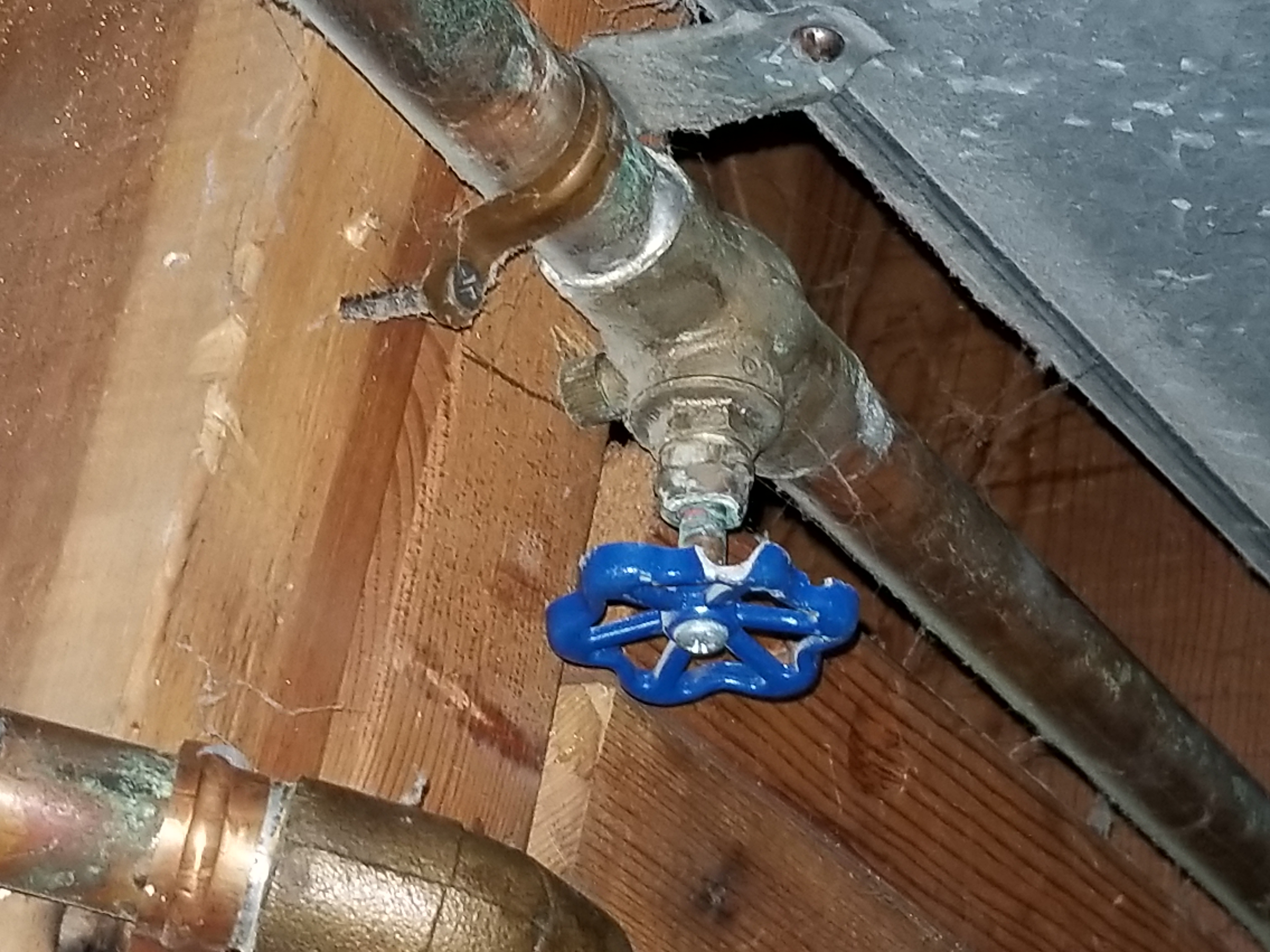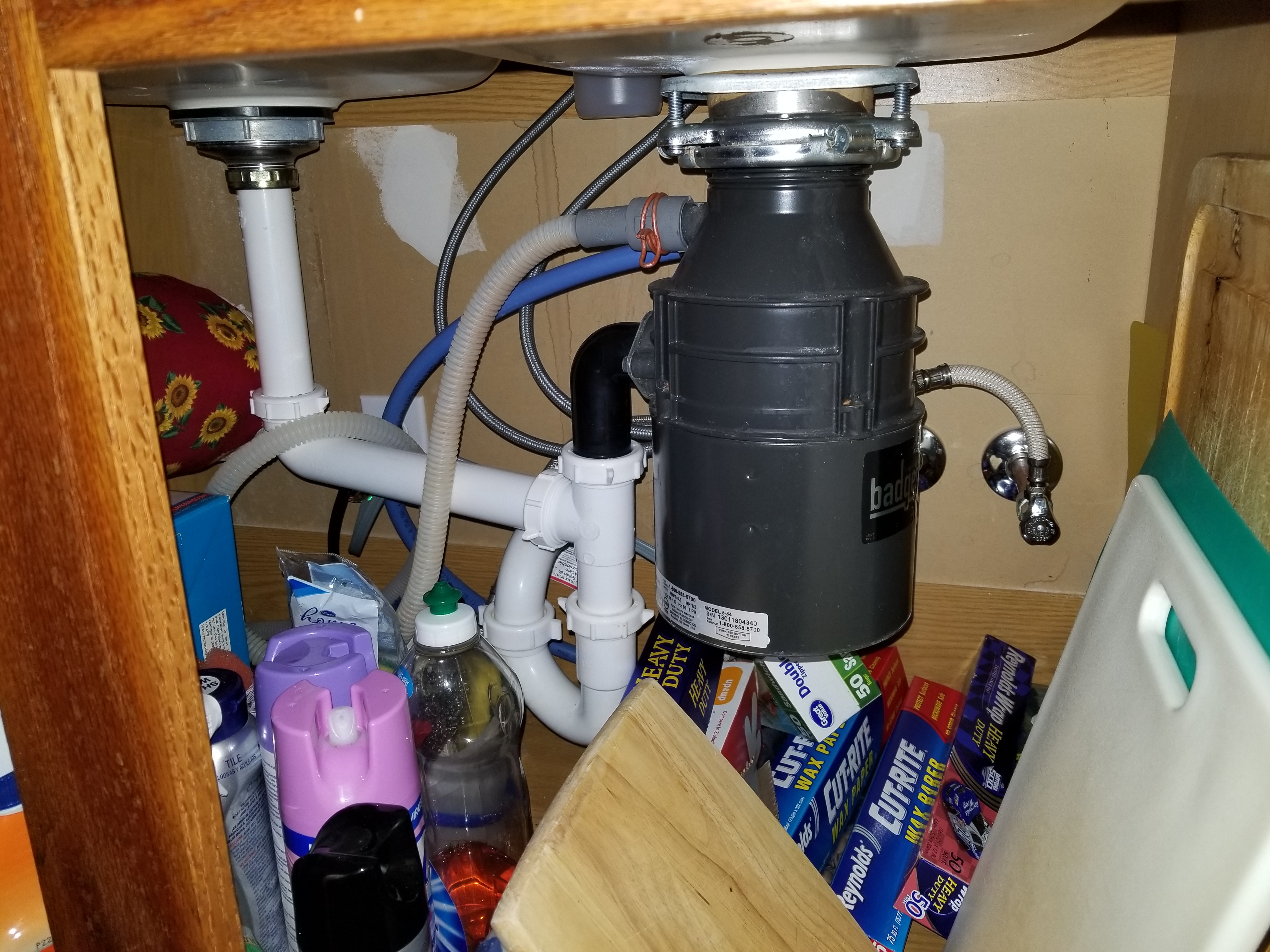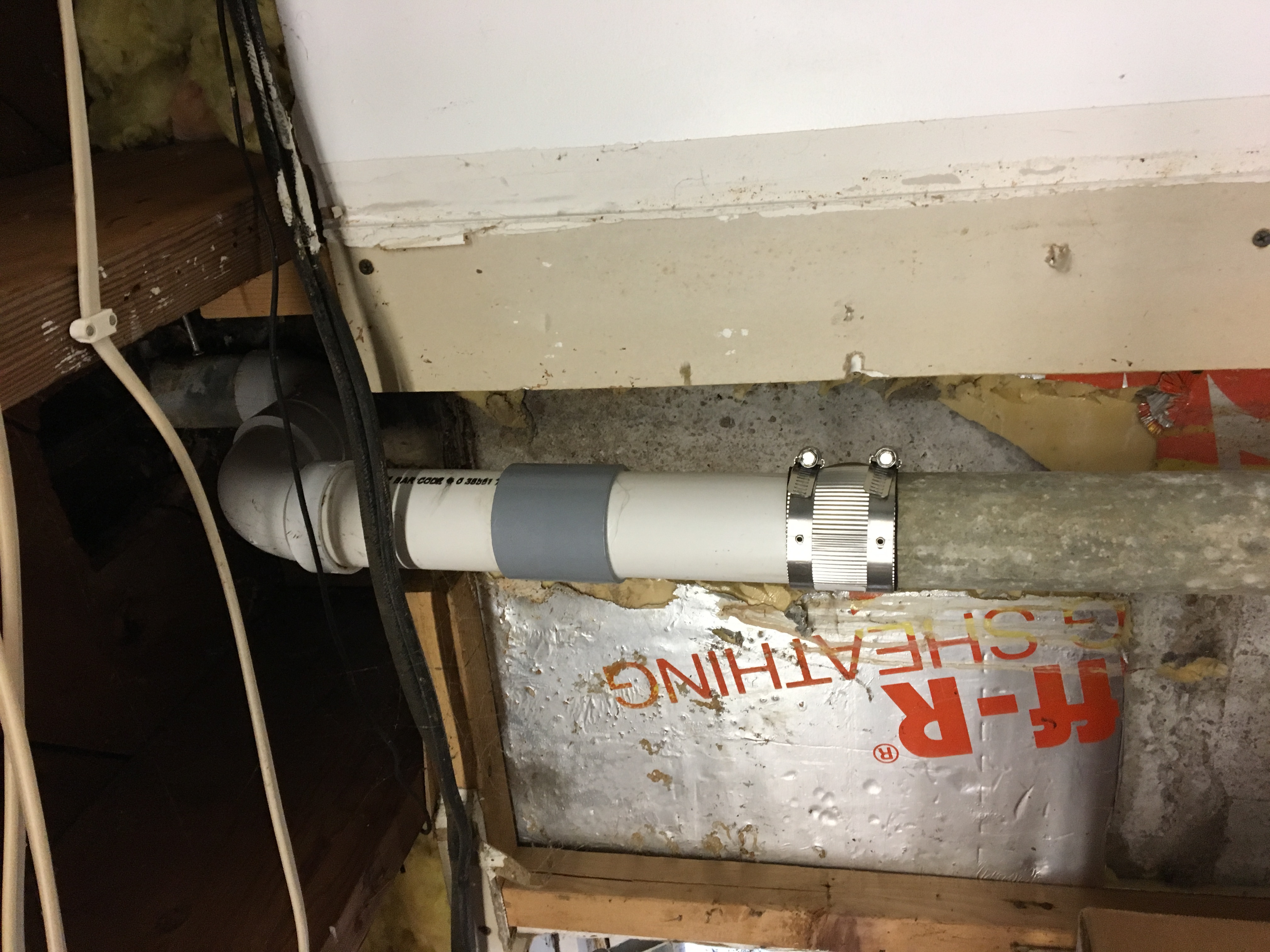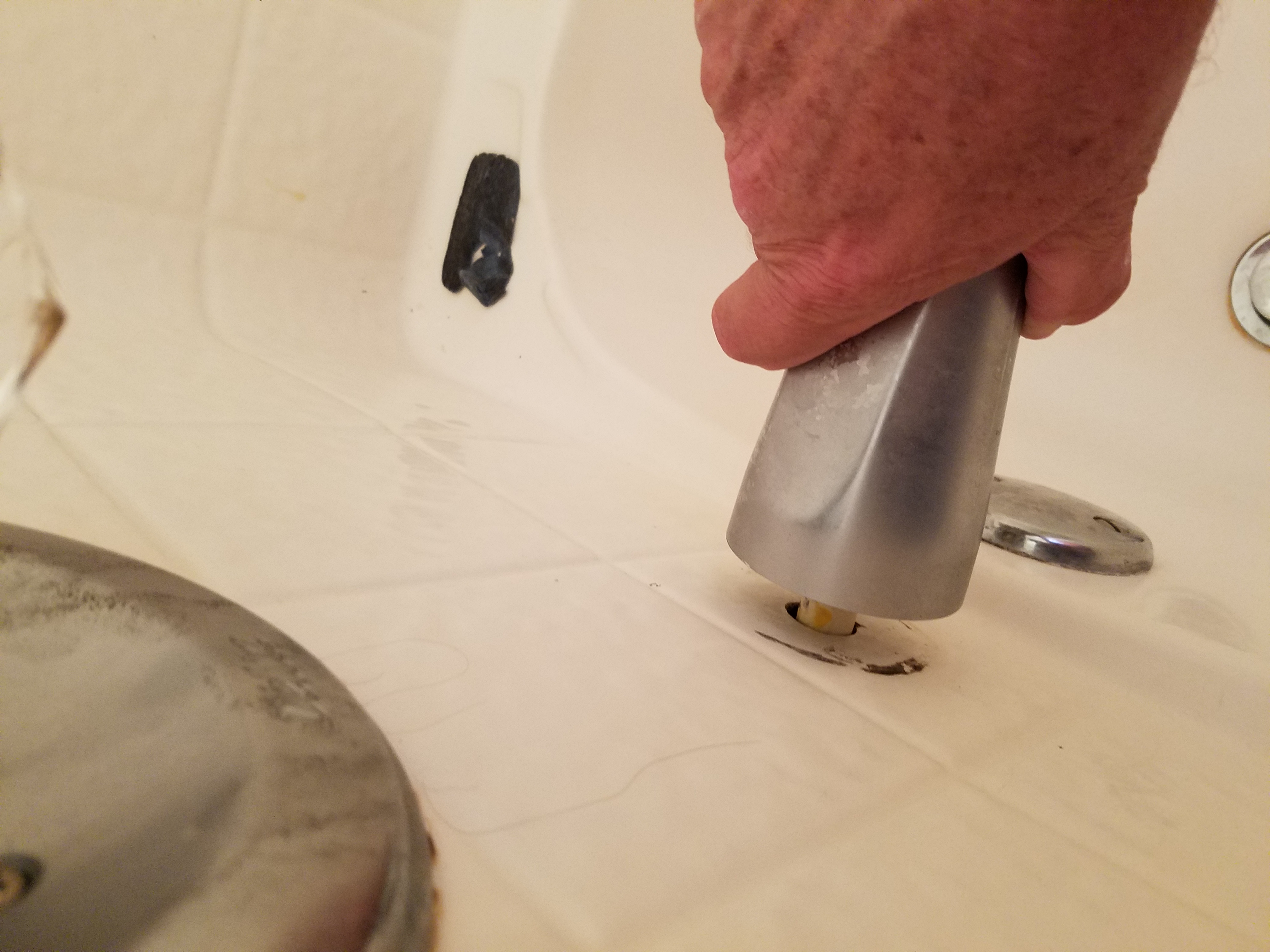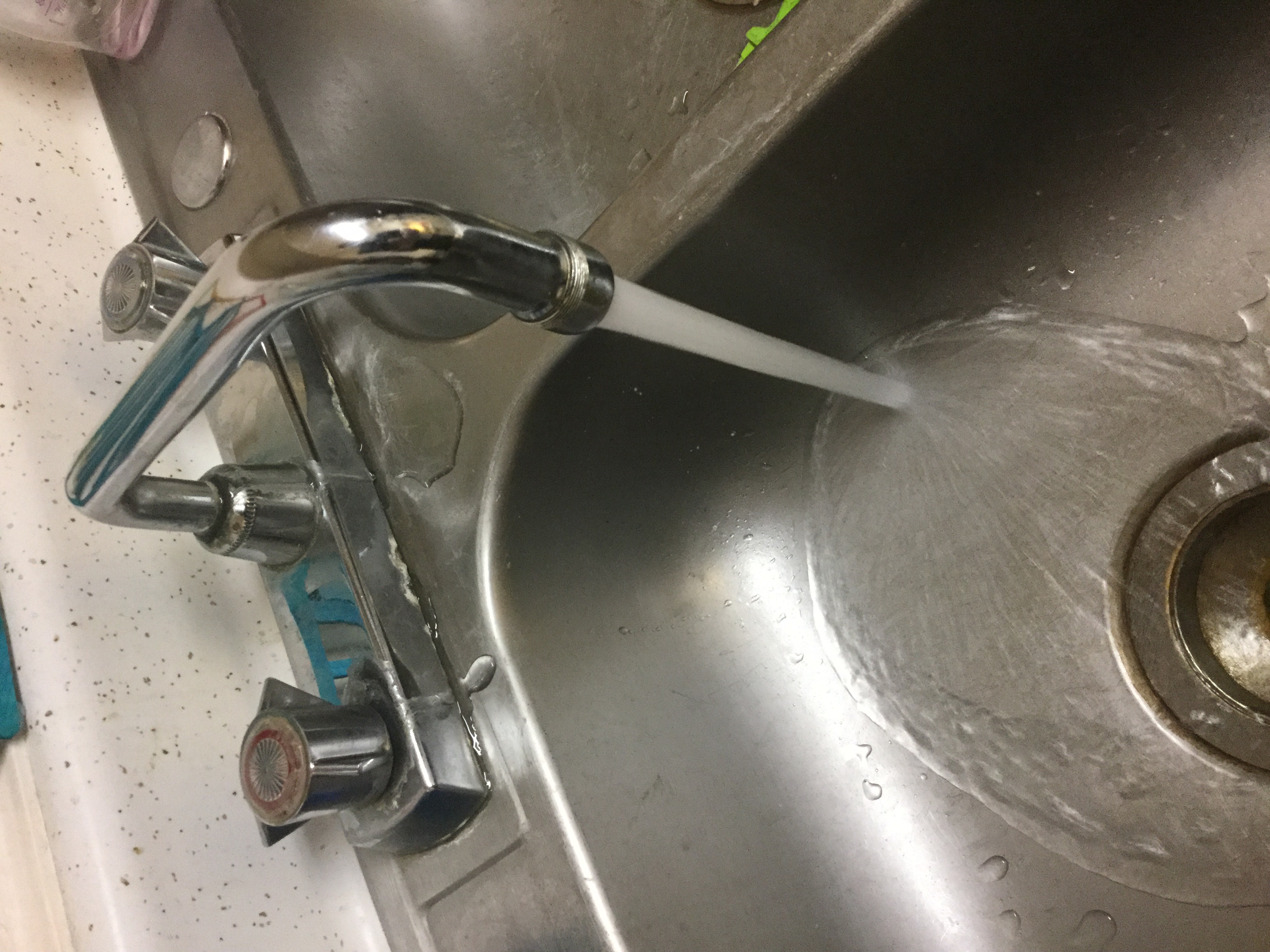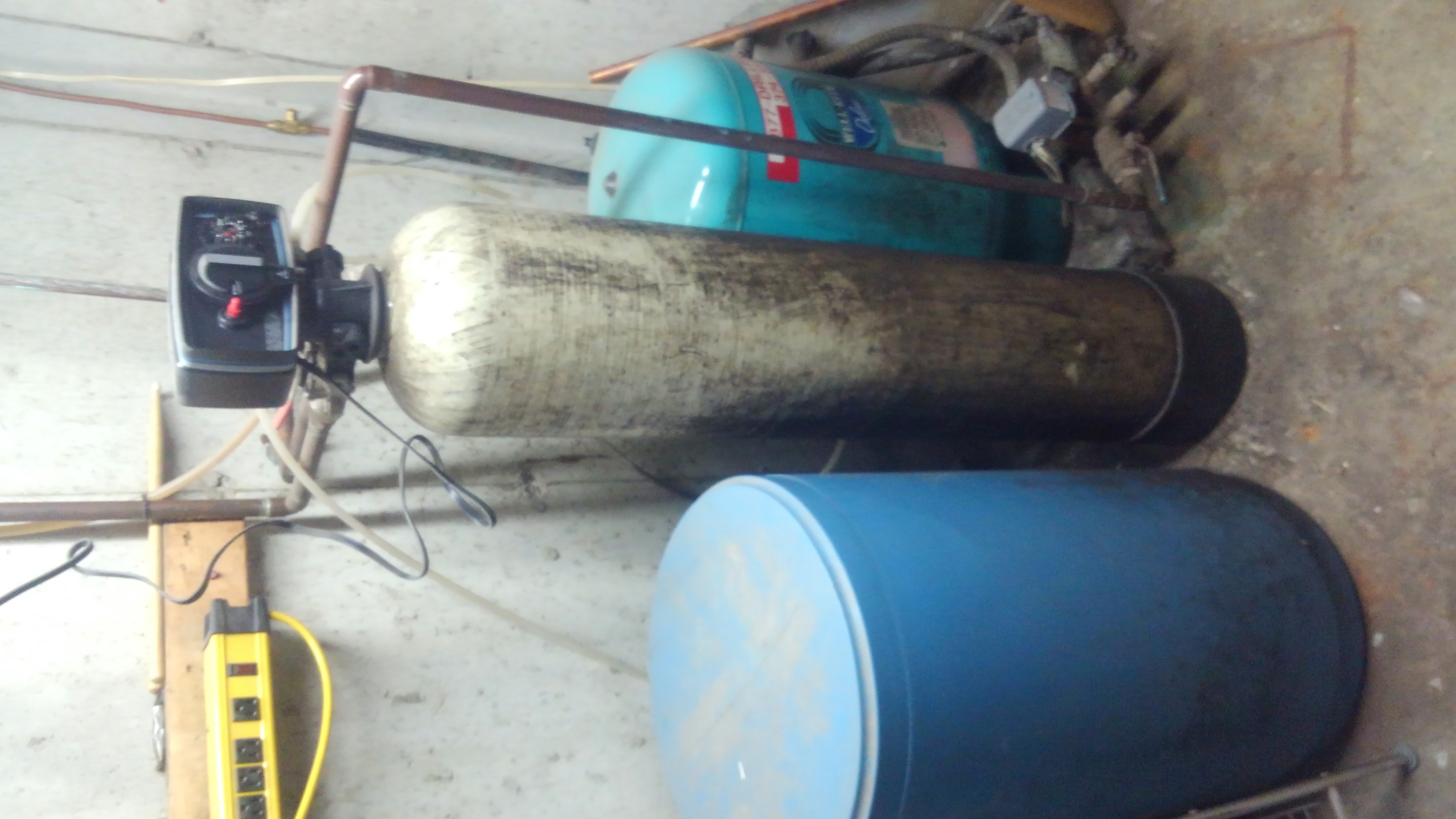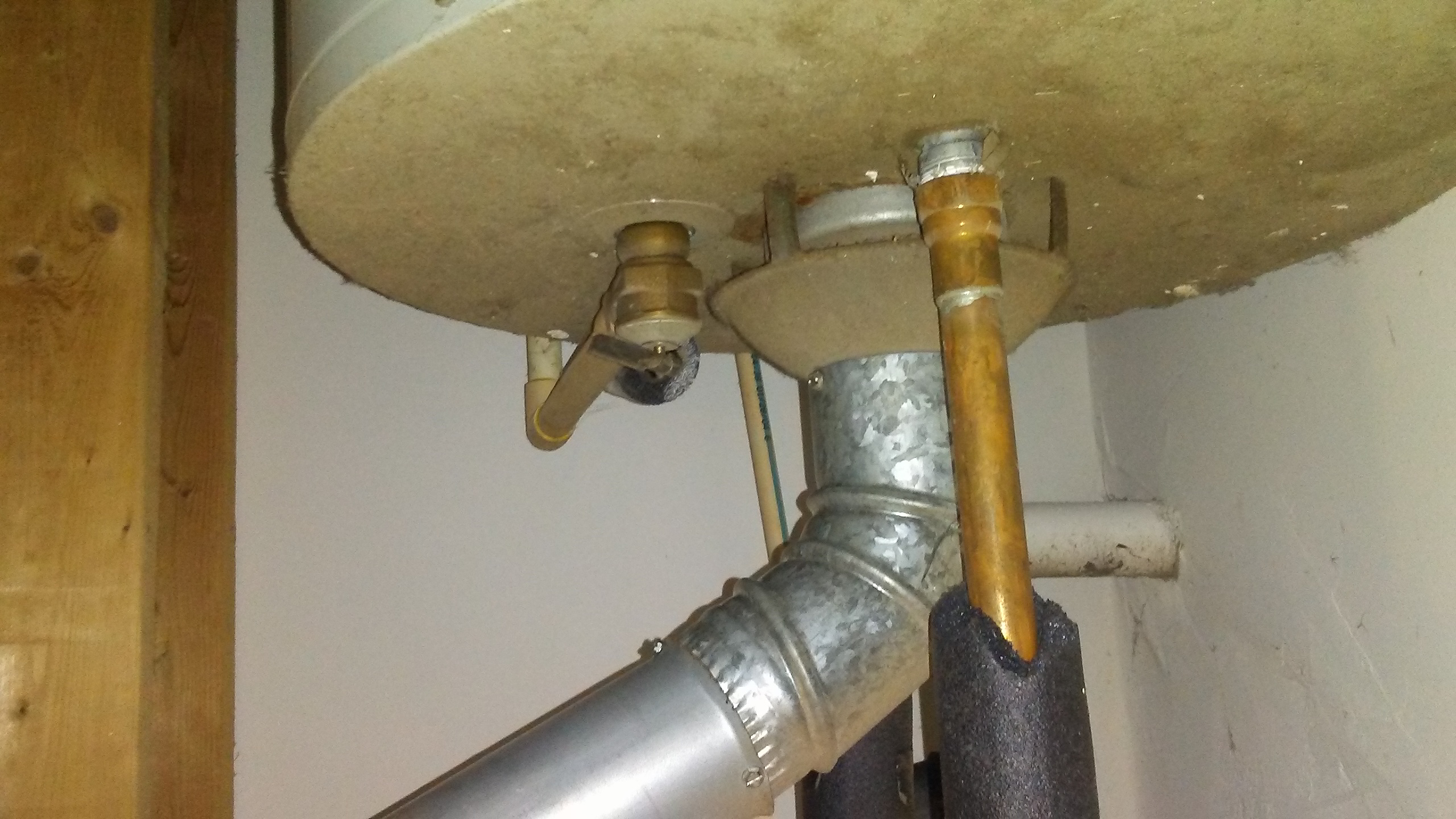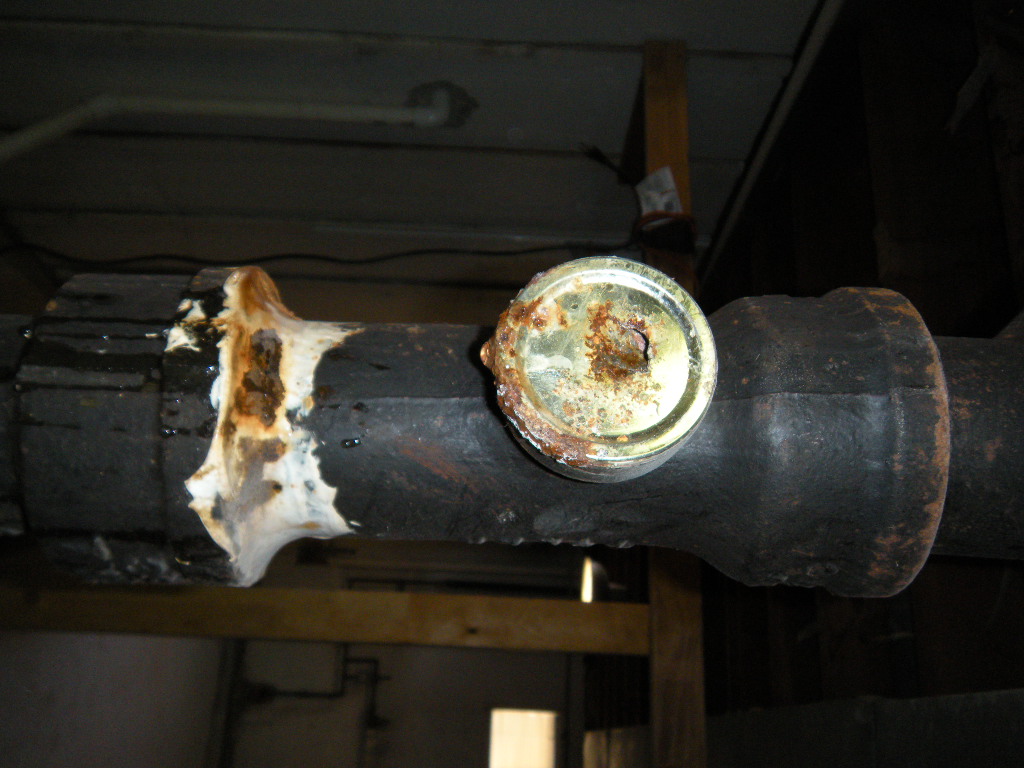Arc-fault circuit interrupters (AFCIs) are special types of electrical receptacles (or outlets) and circuit breakers designed to detect and respond to potentially dangerous electrical arcs in home branch wiring. AFCI indicators help ensure that AFCIs are properly monitoring the circuits that they serve for dangerous faults.
This photo is of a natural gas water heater. It has a TPR valve that extends within 6 inches of the floor, has an expansion tank for thermal expansion, and it has proper venting for the byproduct of incomplete combustion which is carbon monoxide.

This is a picture of a stuck shut-off valve for a hot water heater. The valve will not turn and will need to be replaced to prevent a possible delay in water flow disconnect during a hot water heater malfunction.
Backflow is a potential problem in a water system because it can spread contaminated water back through a distribution system. There are two possible ways for backflow to occur; back-pressure and back-siphonage.
Backflow prevention for residences is most commonly accomplished through the use of atmospheric vacuum breakers (AVBs). AVBs operate by allowing the entry of air into a pipe so that a siphon cannot form.
Inspection shows a properly installed p-trap. The dishwasher discharge hose shown is not looped up and secured to the underside of the counter top. This should be reported as in need of repair. Should be fixed by a licensed plumber.
A dishwasher discharge hose must be connected to the waste tee or disposer inlet above the drain trap.The dishwasher discharge drain hose should also have an air gap or looped up and securely attached to the underside of the counter top.
Plumbing vents will make a vertical run and will carry thru and vent out of the roof and have a “boot” placed around the stack for proper flashing so the roof does not leak. These vents are installedd to expel the gases to the outside of the dwelling.
On gas furnaces it is important for there to be a sediment trap placed on the line to prevent any debris and particles from continuing there journey to the internals of the furnace system and causing problems down the road.
In inspection report writing, it is best to describe the observation along with findings than write opinions about what could be going on. The report should lack bland adjectives that are open to interpretation, and consist of describing what your five senses found.
The cast iron drain pipe has been fixed incorrectly. The use of electrical PVC is not allowed and the connector used to connect the cast iron to the PVC is also incorrect. This appears to be a home owner special and should be evaluated by a professional.
Inspection of the kitchen drain area revealed no issues or leaks at the time of inspection. Pitch of garbage disposal drain line was correct as well as the dishwasher discharge was installed properly. All drain lines were PVC and water supply lines where CPVC.

This picture shows a defect with the bathtub fixtures. The bathtub fixture is plumbed using CPVC. The CPVC appears to not be attached to backing/stud inside of wall which is causing looseness in bathtub water spout. This could lead to leaks behind bathtub/shower enclosure which could cause growth of mold and water damage to surrounding structure. It is recommended that this is assessed/repaired by a licensed plumber.
Tank-less water heaters are gaining in popularity, not only for their efficiencies but also for the unlimited supply of hot water they provide. Standard water heaters must keep a tank of water heated weather there is hot water demand or not; where as the tank-less system heats only the water that is currently in demand, making them much more cost efficient. Initial cost is still a concern; however the saving and longevity of a unit makes them a good investment.
A common cause of fires in a home is from defective dryer exhaust ducts. As an inspector, we need to inspect the exhaust ducts for proper construction materials of duct, duct length, duct termination, duct size and proper installation. We need to point out issues that may need to be corrected, especially if they can lead to potential fire hazard from overheating.
Leaky Faucet: there were multiple plumbing leaks at the kitchen faucet. plumbing leaks have the potential to damage the cabinets, floor, structure and may increase moisture along with the risk of mold. I recommend a licensed plumber make the necessary repai to prevent further damage.
Be sure to check every trap under every fixture, homeowners are known to make unconventional repairs. Its common to find S-traps in places that are not vented, this type of trap is considered a defect and prone is to siphonage. If the seal is broken in the trap, sewer gases will escape into the home.
Plumbing fixtures under sinks should be inspected for water leaks especially around connectors. Look for water stains underneath the fixture. If stains are visible recommend a licensed plumber to fix the problem. Never attempt to fix the problem yourself as you are not a licensed plumber.

This is the water softener for the house as there is high iron content in the water and needs to be treated. Located in the north east corner of the basement, upon inspection i noticed the discharge line entering a 2" trap that was added to the sewer line. I would recommend a plumber to relocate this to the outside for proper disposal. My concern is the amount of salt that is being discharged into the septic system will deteriorate the tank and the D-box.
This hot water boiler does not have the extended tank. It does have the downsteam PVC pipes and this boer does sit high just without a pan and the fuel type for this boiler is gas. Also it is located in the garage.
